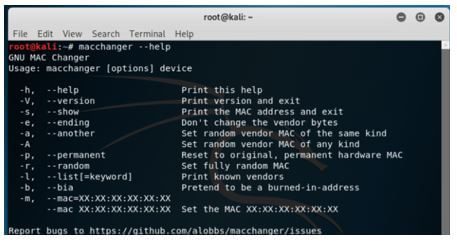
- #Can you use kali linux on a mac install
- #Can you use kali linux on a mac update
- #Can you use kali linux on a mac full
- #Can you use kali linux on a mac mac
Simply pressing ESC within the VM nudges the process along. Note that in some cases, this EFI Network check may hang. If it’s not, triple-check that you entered the firmware line correctly in the. When booting with EFI, your boot screen should look like this: You should see the check mark and get the Kali boot screen.

Power off your VM, eject the drive from the Mac, and power on the VM again with the USB settings screen up.
#Can you use kali linux on a mac mac
If you don’t get a check mark, this means that your Mac has grabbed the USB drive.
#Can you use kali linux on a mac update
Immediately, you should see the USB Settings screen update with a check next to your USB device: (You can also expand your toolbar and look at the USB icon). Go to “Settings” -> “USB Devices” and leave this settings screen up next to your powered-off VM. If you run into problems, you have a few options. Now, power on your VM, and it should boot to Kali Linux: vmx file should look something like this: If you paste this line into the editor, you may get funny “Mac quotes” and this will break the VM. Edit that file with your favourite editor and insert the following line:īe careful with copy and paste.
#Can you use kali linux on a mac full
Ours is called “Kali USB Boot” so the full path is ~/Documents//Virtual Machines.localized/Kali USB Boot.vmwarevm". Change to the directory containing this VM. Virtual hard drives are stored by default in ~/Documents//Virtual Machines.localized. There is no GUI setting for this so, you need to find this VM on your hard drive. Select “Advanced Options” and “Remove Hard Disk”, sending it to the Trash. Select “Connect to Linux” as the “Plug in Action” and set the machine to “Connect to this virtual machine” when it is plugged in: Just make sure that if you’re using a USB-C device, select USB 3.0 compatibility. Note that USB-C, dongles or not, make no difference here.

Insert your Kali USB and set USB compatibility to USB 3.0 (if you have a USB 3.0 compatible system and drive). This is optional, but it really helps the performance of your Kali experience. Next, head to “Settings” -> “Display”, and check “Accelerate 3D Graphics”. Go to “Virtual Machine” -> “Settings” -> “Processor and Memory”, set memory to at least 2048 MB, and set cores to “2”:

Here’s how you do it.Ĭreate a new virtual disk. Thankfully, Fusion has matured enough that now we can get under the hood and make this process work. A few workarounds have been introduced, like booting a specialized VM that would attempt an EFI boot, but they had their own problems. That’s helpful, but if you create a Mac or Windows guest and try to boot from the USB, you’ll get the Kali boot screen, followed by a boot-halting message that the USB doesn’t contain a version of Mac or Windows.īecause of this flux, and core differences between Fusion and the rest of the VMware line, this EFI USB booting issue had us stumped. Instead, they set it up so that if your guest is Mac or Windows-based, it will automatically do an EFI boot for you. The company seems to think that Mac users don’t need extensive options, like a checkbox for EFI booting. That seemed like a great idea but the Fusion product has been in flux for awhile, and seems to get “special” treatment from VMware. However, wouldn’t it be great if you could use a product like VMware Fusion (which is the industry-leading product and does a fabulous job running every other OS on our Macs already) to boot and test your live USBs? No rebooting. You could, under certain circumstances, reboot your Mac and boot from the USB, but that can be a real hassle.
#Can you use kali linux on a mac install
However, the process of testing your USB install can be a bit of a pain, especially if you’re a Mac user. Normally stored on a USB drive, these installations put the power of Kali Linux in your pocket, ready to launch whenever you need it.īuilding Kali live USB installations is pretty straightforward, whether you’re going for plain installation, building in persistence so you can store files, going fully-encrypted (even arming a self-destruct passphrase), or customizing and building your own tailored install. One of the fun, and often necessary, features of Kali Linux is the ability to create really killer, completely customized live-boot installations.


 0 kommentar(er)
0 kommentar(er)
